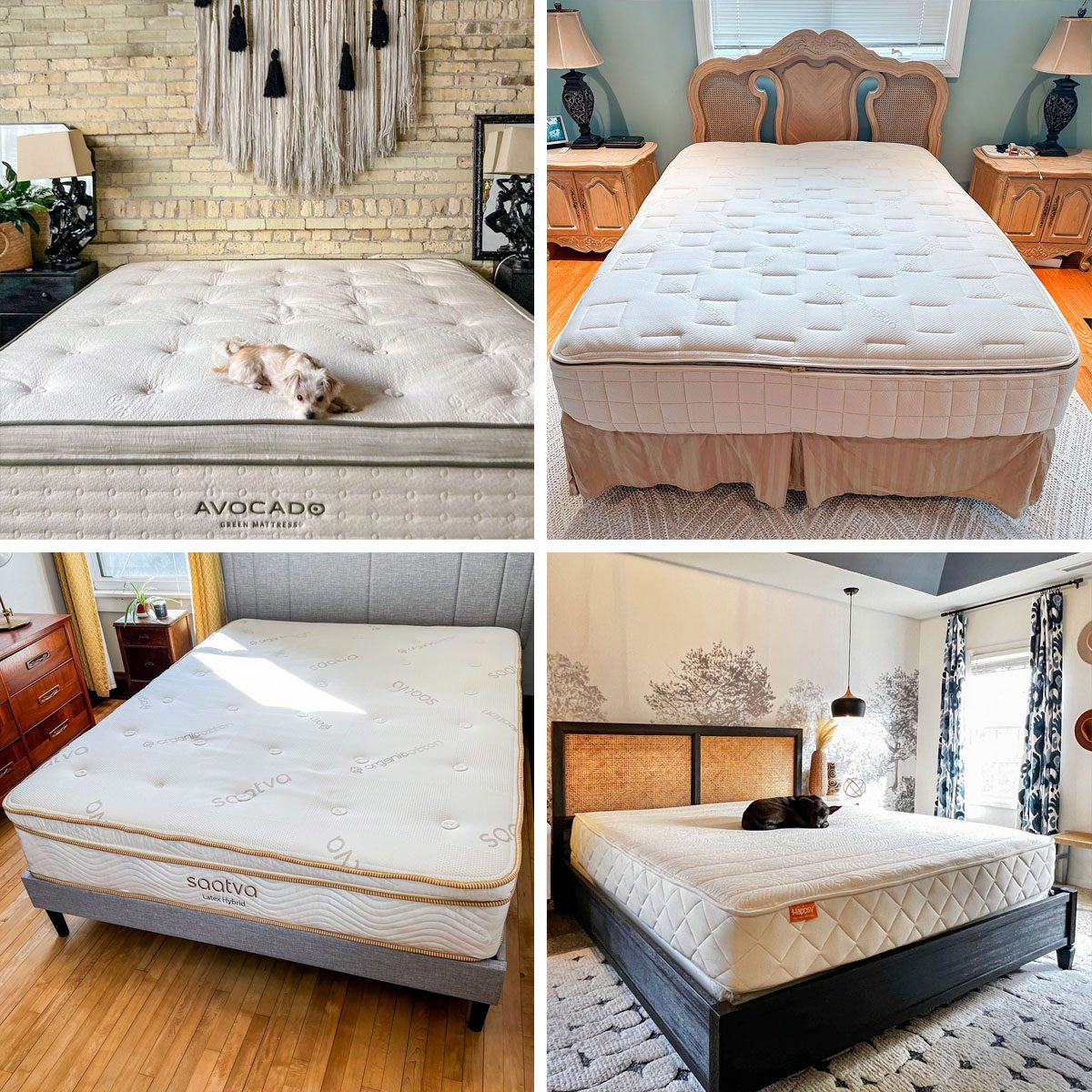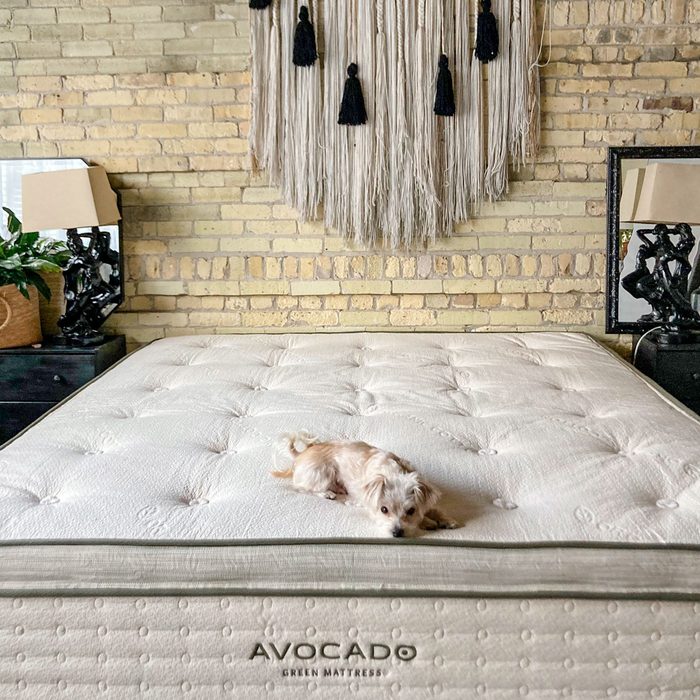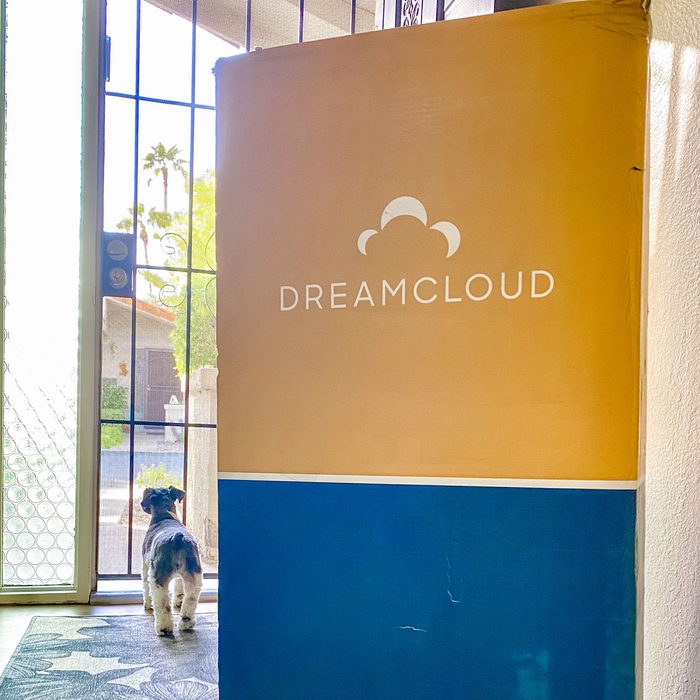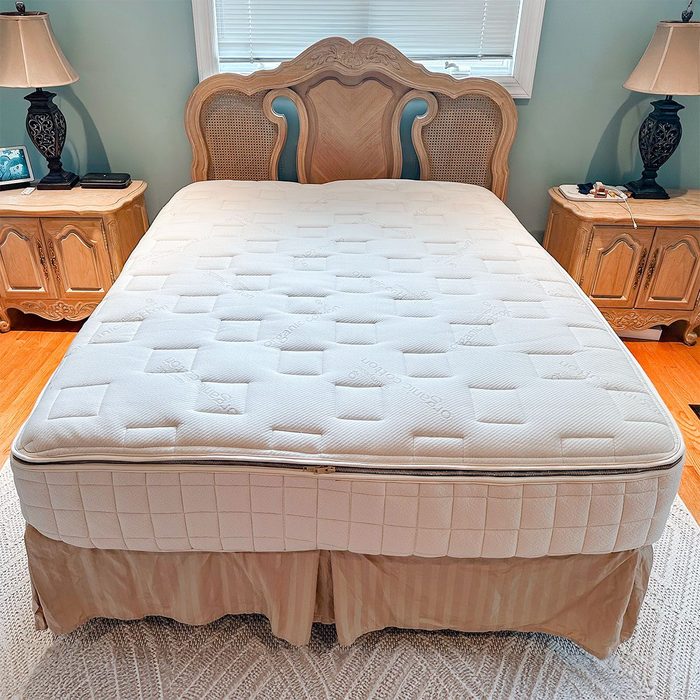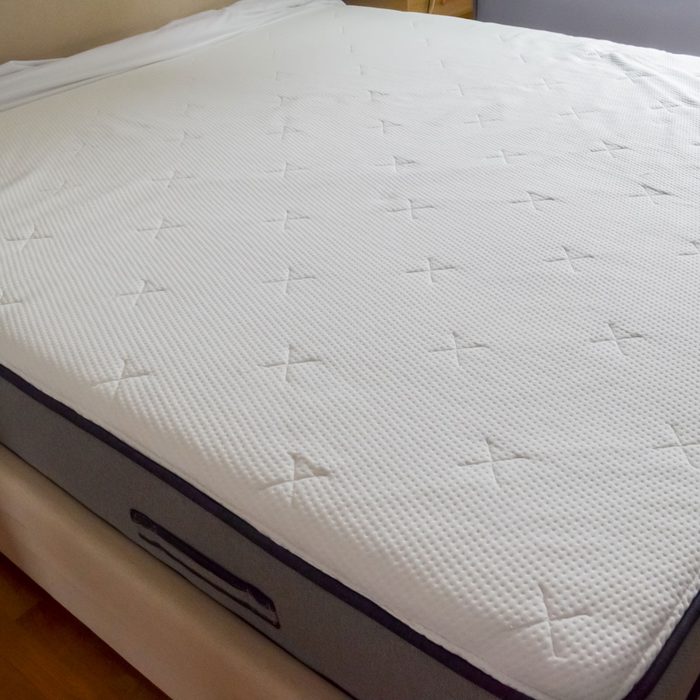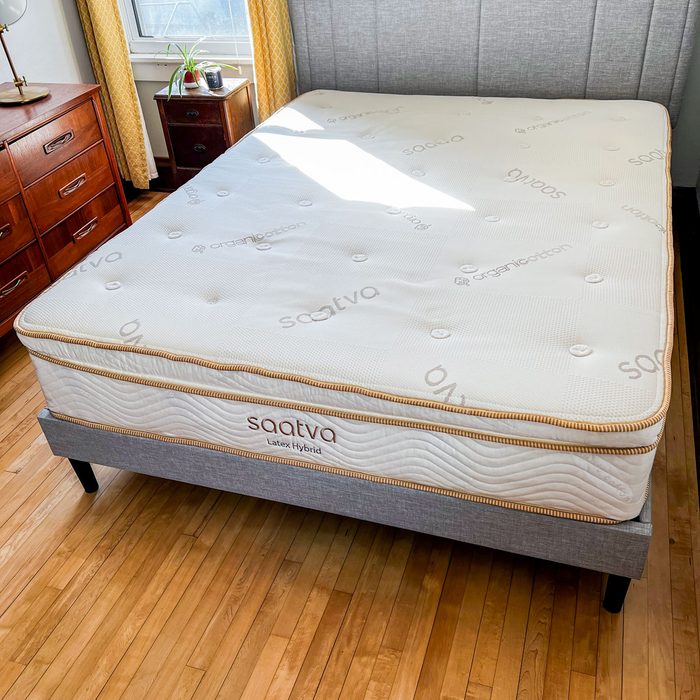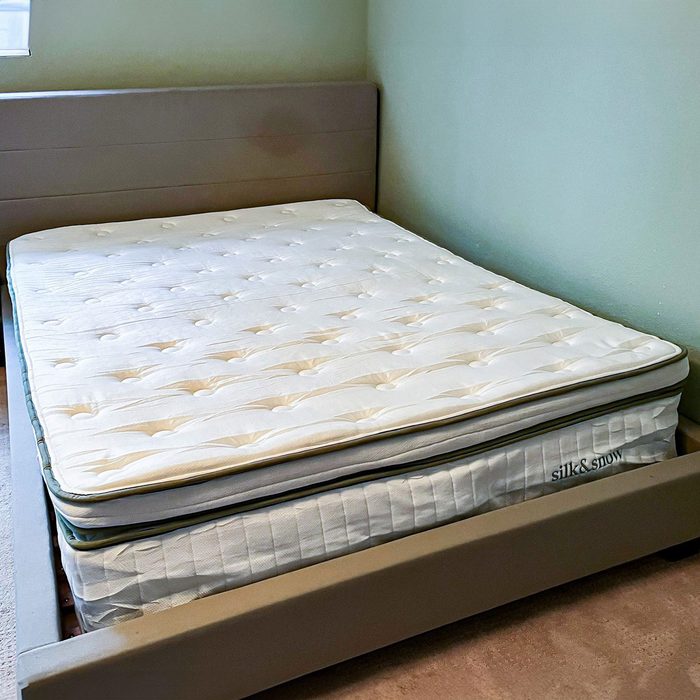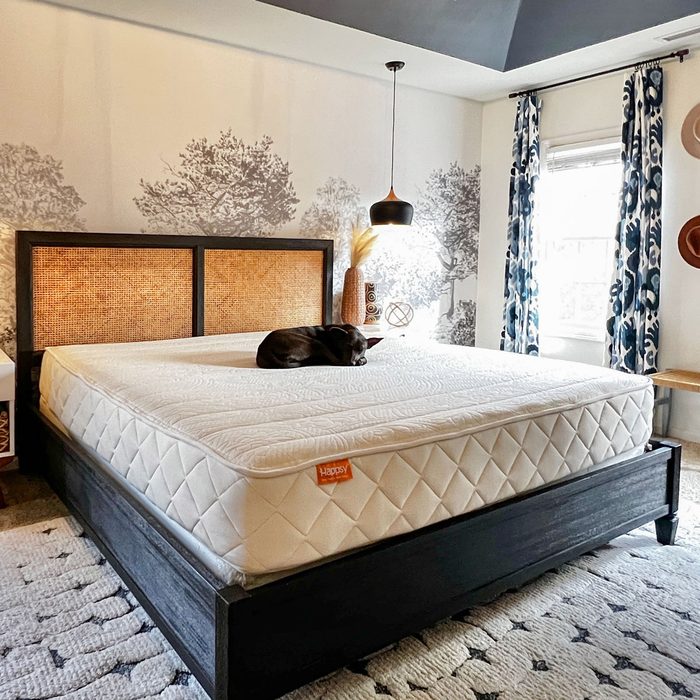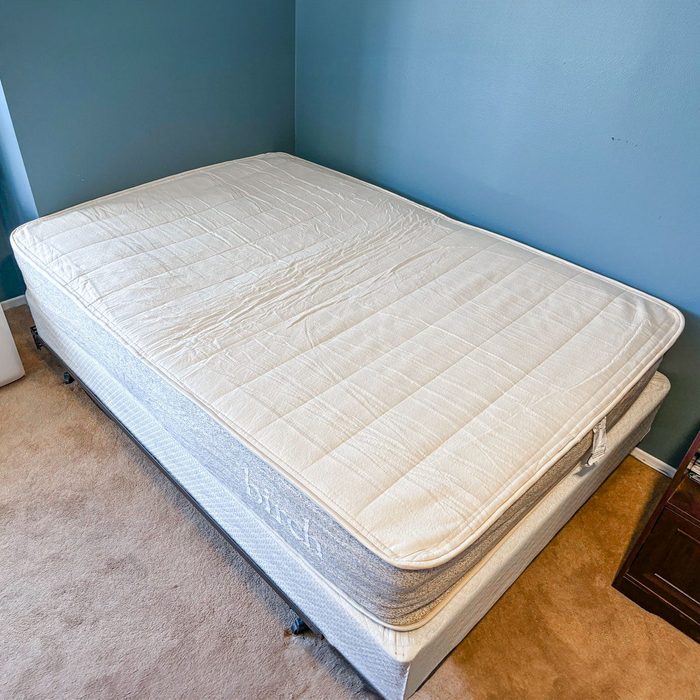What to look for when buying a non-toxic mattress
Many mattresses include warnings about the presence of carcinogens or chemicals that cause reproductive harm. However, not all manufacturers disclose this important information. “I would only purchase from a company that is transparent about the materials they use in and on their mattress,” says Stoiber. Don’t be afraid to be diligent about your shopping decision for a non-toxic bed. “The absence of warnings does not mean that the product does not contain chemicals of concern,” explains Kar. “Follow up with the brands and ask if the products contain any of the chemicals you are concerned about.”
While they might not be the most affordable mattresses, take into consideration that buying a chemical-free mattress doesn’t just benefit you—it also helps workers all along the supply chain avoid exposure to the chemicals, for starters. “What’s more, toxic chemicals don’t end up in the environment and put people and wildlife further at risk when discarding the products,” adds Kar.
Since most mattresses don’t easily biodegrade, they will continue to emit harmful chemicals as they sit in a landfill—another reason why recycling mattresses is so important. Along that same note, consider the company’s sustainability practices and commitment to ethical and responsible manufacturing.
Types of non-toxic mattresses
Every type of mattress, including memory foam, latex, innerspring, hybrid and latex, is available in non-toxic models. The best non-toxic mattress depends on your personal preferences, as comfort is subjective. But sleeping position, weight and health factors, like back pain, are a few things that will determine the type of mattress best suited for your needs.
Why you should trust us
It can be easy for a brand to slap a “non-toxic” label on their product and call it a day, so we went several steps further to ensure that what you’re shopping for is truly a chemical-free mattress. Besides doing our due diligence of heavily researching the non-toxic mattresses and considering what real-life buyers have said, we consulted with seven experts—all bringing something a little different to the table—to confidently say that these are the best non-toxic mattresses you can buy. Our team of expert sources includes Tasha Stoiber, PhD, a senior scientist at the Environmental Working Group, Avinash Kar, a senior attorney and director of state health policy for the National Resources Defense Council, Avocado CMO and co-founder Mark Abrials, Abby Wood, a sleep and health content associate at Mattress Nerd, Alex Savy, a certified sleep science coach and founder of SleepingOcean, Jackson Lindeke, a product expert at the Sleep Foundation and Victoria Wildhorn, a sleep health specialist at Mattress Clarity.
Nina Derwin is a commerce updates editor for Reader’s Digest, Taste of Home and Family Handyman. She has experience researching and reviewing various items to help shoppers find the best products on the market. She researched and updated this piece.
How we found the best non-toxic mattresses
It should come as no surprise that there are many, many mattresses on the market. To narrow our search, we combed through the most popular models from well-known brands. We looked at their basic details, features, prices and real-world customer reviews to see if they’re among the best available. Then, we sent them off to our editors and testers to see how they perform in real life.
FAQ
What is a non-toxic mattress?
There’s no universal definition, but generally, the best non-toxic mattress is free from potentially harmful chemicals. The EWG suggests seeking out the following qualities:
- Made with at least 95% organic cotton, wool or natural latex
- Certified by the Global Organic Textile Standard (GOTS) or Global Organic Latex Standard (GOLS)
- No added flame-retardant chemicals
- For memory foam or polyurethane, certified low-VOC by an independent certification group, such as Oeko-Tex Standard 100 or Greenguard Gold
- No scents or chemical antimicrobial treatments
- No glue or only water-based glue used in the construction
Are latex mattresses non-toxic?
Abrials says that while many companies may use natural elements, they often don’t disclose all of their materials—most of which often include toxic flame retardants or binding agents. “Look for trusted certifications that test products to validate they are free from toxins that are known to be harmful to humans and environmental health,” he says.
Natural latex is derived from the sap of rubber trees, and it’s a common material utilized by non-toxic mattress brands. However, some mattresses made with synthetic latex may contain harmful chemicals. When shopping for the best non-toxic mattress, look for one that has 100% natural latex that’s certified by an independent organization, such as the GOTS or GOLS. These certifications ensure that the latex is free from harmful chemicals and meets strict environmental and social standards. Also, check out the other materials used to ensure the mattress is actually non-toxic.
What materials are in a non-toxic mattress?
A non-toxic bed is typically made with natural, sustainably sourced, organic and eco-friendly materials that are free from harmful additives and toxins. Common materials include organic cotton, organic wool, plant-based foams, natural latex and other natural fibers like hemp.
How do I know if my mattress is non-toxic?
To determine whether your mattress is non-toxic, look for Global Organic Textile Standard (GOTS), Global Organic Latex Standard (GOLS), EWG Verified or Oeko-Tex Standard 100 certifications. If you’re unsure, contact the manufacturer or check their website to see which certifications your mattress has.
Sources:



















